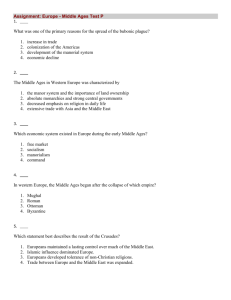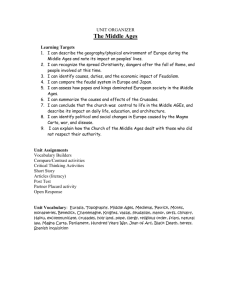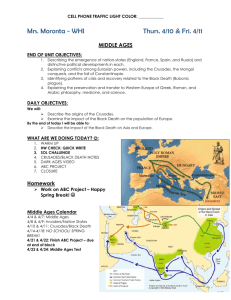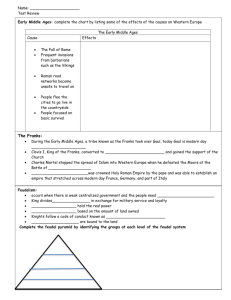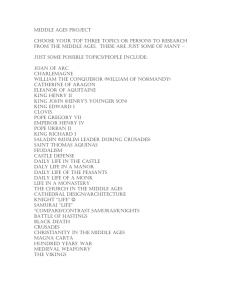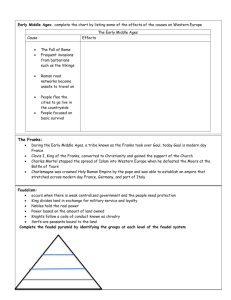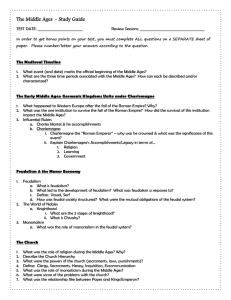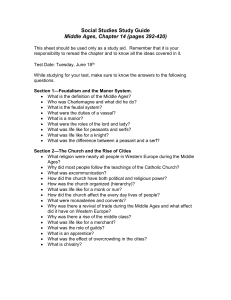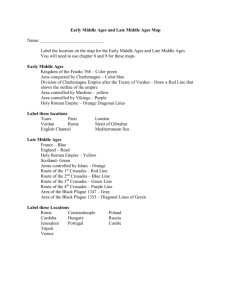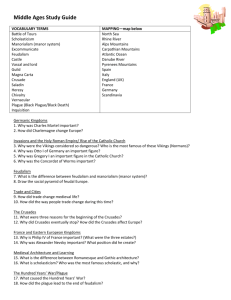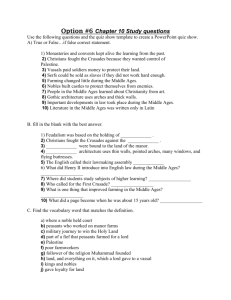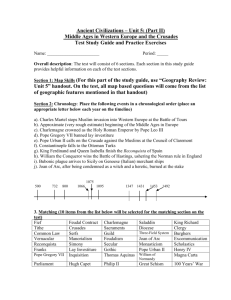Chapter 14 Europe in the Middle Ages 800 - 1400
advertisement
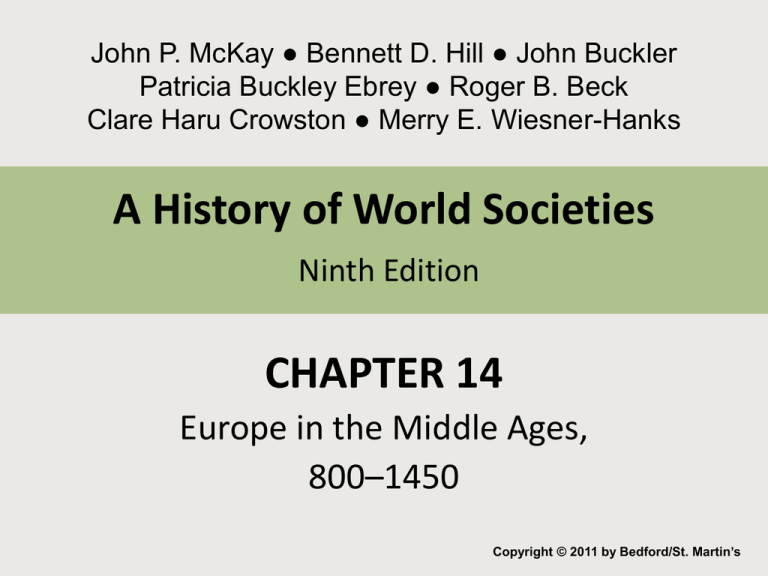
John P. McKay ● Bennett D. Hill ● John Buckler Patricia Buckley Ebrey ● Roger B. Beck Clare Haru Crowston ● Merry E. Wiesner-Hanks A History of World Societies Ninth Edition CHAPTER 14 Europe in the Middle Ages, 800–1450 Copyright © 2011 by Bedford/St. Martin’s I. Political Developments A. Invasions and Migrations 1. Viking assaults 2. Magyars 3. Muslims I. Political Developments B. Feudalism and Manorialism 1. Vassals and fiefs 2. Charles Martel 3. Feudalism 4. Manorialism 5. Serfs I. Political Developments C. The Restoration of Order 1. William the Conqueror 2. Henry II 3. Philip II 4. Otto I 5. Frederick Barbarossa I. Political Developments D. Law and Justice 1. Common law 2. Magna Carta II. The Christian Church A. Papal Reforms 1. The Lateran Council 2. Pope Gregory VII 3. Protests B. Monastic Life 1. Ecclesiastical careers 2. Prayer 3. Dominicans and Franciscans II. The Christian Church C. Popular Religion 1. Center of community life 2. Symbolism 3. Holy days and saints’ days 4. Relics D. The Expansion of Christianity 1. European expansion 2. Reconquista III. The Crusades A. Background and Motives 1. Reunion 2. Muslim conquests B. The Course of the Crusades 1. Crusader states 2. Saladin and Jerusalem 3. The Byzantine Empire III. The Crusades C. Consequences of the Crusades 1. Jewish-Christian relations 2. Restrictions 3. Christian-Muslim relations IV. The Life of the People A. The Life and Work of Peasants 1. “Those who work” 2. Agricultural villages 3. Gender roles B. The Life and Work of Nobles 1. Privileges 2. Military obligations 3. Chivalry IV. The Life of the People C. Towns, Cities, and the Growth of Commercial Interests 1. Characteristics 2. Craft guilds 3. Sanitation D. The Expansion of Trade and the Commercial Revolution 1. Venice 2. Hanseatic League V. Learning and Culture A. Universities and Scholasticism 1. University of Bologna 2. Salerno 3. Scholastics 4. The degree B. Cathedrals and a New Architectural Style 1. Gothic 2. Community functions V. Learning and Culture C. Troubadour Poetry 1. Poems and songs 2. Lyric verses 3. Cultural mix VI. Crises of the Later Middle Ages A. The Great Famine and the Black Death 1. The “little ice age” 2. Bubonic plague 3. Causes and effects VI. Crises of the Later Middle Ages B. The Hundred Years’ War 1. England and France 2. Joan of Arc 3. Results VI. Crises of the Later Middle Ages C. Challenges to the Church 1. Electoral debate 2. The Great Schism VI. Crises of the Later Middle Ages D. Peasant and Urban Revolts 1. Wages 2. Taxes 3. Discontent and violence
